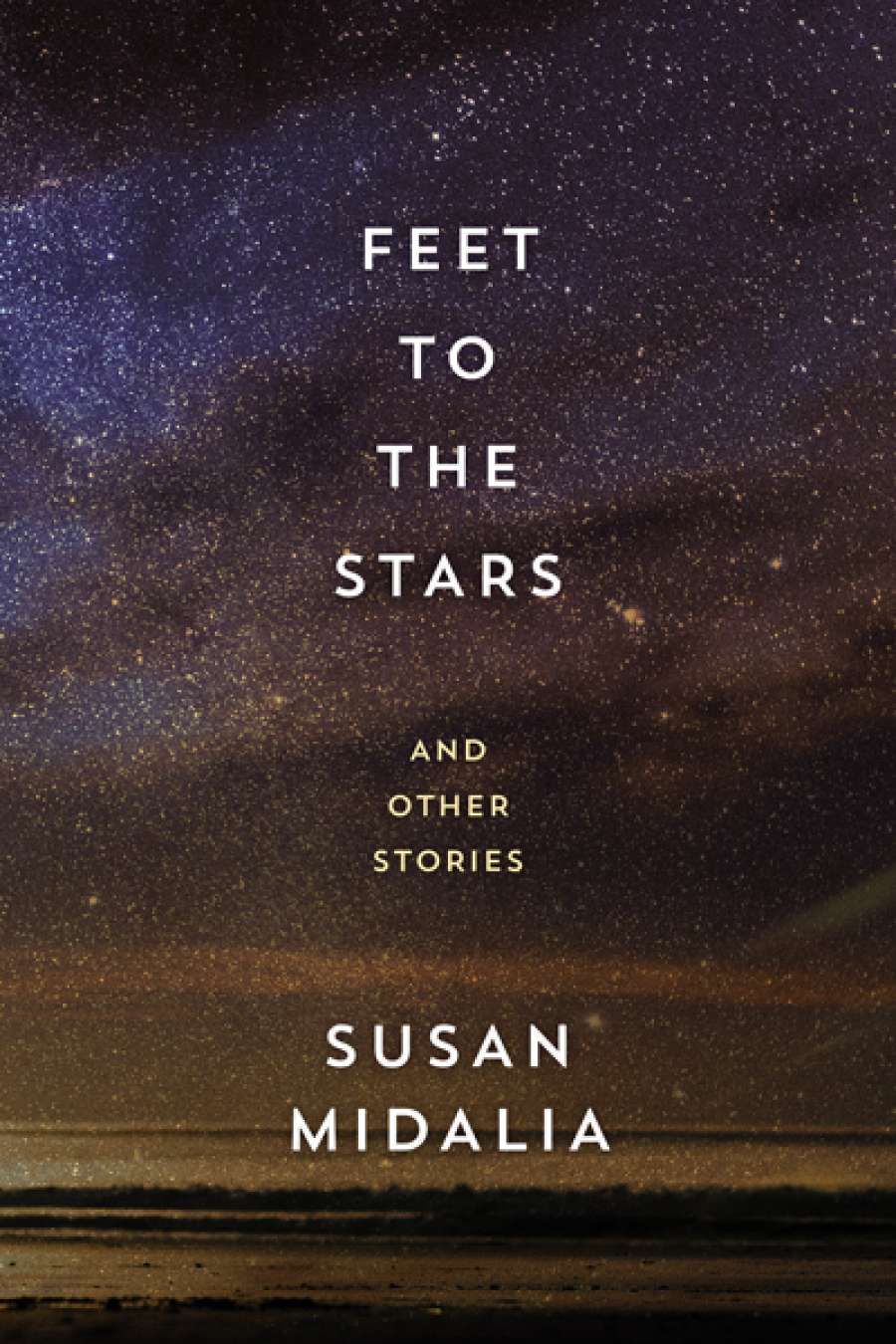
- Free Article: No
- Contents Category: Fiction
- Custom Article Title: Cassandra Atherton reviews 'Feet to the Stars' by Susan Midalia
- Book 1 Title: Feet to the Stars and other stories
- Book 1 Biblio: UWA Publishing, $24.99 pb, 180 pp, 9781742587547
And yet, when women do give birth, they often fail their children or are ambivalent about their child's future in a world of 'patriarchal attitudes'. Significantly, in 'Because' the narrator's mother has been missing for a decade and the grandmother in 'Exploring' is cold, distant, and judgemental in her relationships with her daughter and granddaughter.
Some of the most compelling relationships are those between teachers and students. In the eponymous 'Feet to the Stars', a teacher visits his student who has body dysmorphic disorder. In the best story in the collection, 'Self-Reflexivity and Other Stuff', a teacher corrects her students' stories while simultaneously editing her own. Indeed, teachers and students populate the stories in this collection and a feast of intertexual references electrify the text with their evocation of canonical writers such as Shakespeare, James, Dickens, Woolf, Flaubert, Joyce, and Conrad. The father in 'Working it Out' paraphrases C.S. Lewis: 'What had that writer said? We read to know that we are not alone.' Midalia's control and refinement in the use of these intertexts is inventive, and the way in which her characters find solace in classic texts, reminds the reader of the transformative power of literature.
Midalia's stories explore the ways in which the personal is political; she excels in critiquing domesticity and family relationships. Less successful are the stories that reference politics too obviously, such as the information on the immigrant experience on Ellis Island in 'The Hook', and 'Oranges', where a mother and daughter look up the history of Lebanon on Wikipedia:
I asked Carly what she knew about Lebanon. Nothing that Wiki doesn't, she said, and so we looked it up together, scrolled through lots of pages. We read about their ancient culture ... the wars, a really long line of them. Check out the latest one, Carly said, a civil war: 150,000 killed, 200,000 wounded, 900,000 displaced; it's mind blowing.
'In Feet to the Stars, joy and ambivalence mingle in stories that reference the filial (often mother–daughter) relationship'
More successful are Jude's comments about both the refugee experience and lesbianism in 'Exploring', though her rant would be more arresting if it weren't confined mainly to two pages. These approaches lecture the reader, rather than allowing them space to glean information from the story.
However, the protagonist in 'Self-Reflexivity and Other Stuff' is brilliantly composed. The story begins with Vanessa correcting her students' work and complaining that there are 'too many stories about eating disorders', which is particularly clever given that Midalia's title story is about a girl with an eating disorder. There is wit and black humour in this piece, but its originality comes from the brave revelation that not all teachers like their students or their job:
And so, now ... Sophie's opening sentence. Because this story is so sorrowful and anguished and melancholy, like the hurtling, bitter drumming on a hard tin roof, the shadow of a life in all its terrible suffering, I'm afraid I won't be able to make it flow. Merciful god, where did one start with this rubbish? Clichéd and excessively adjectival; mixed metaphors; redundancies; could a tin roof be anything but hard? And so clumsily self-reflexive, because someone must have told the poor girl that drawing attention to the act of writing was funkily postmodern.
The teacher in 'Feet to the Stars' is similarly exposed when he tells his class to, 'get a grip, get a sense of – he swallowed the word fucking – perspective'.
Midalia's stories are clever portraits of the family as a political institution in which the mother is most often at the centre. The characters all have impressive 'inner lives' that are exposed in italicised internal monologues and quips. The book concludes with a stunning moment when Jude recognises the ineffability of the sublime. It is a detailthat could stand for the entire collection's exploration of the limitations of language: 'Standing close, not saying a word. We have all the time in the world. But then again, we haven't.'


Comments powered by CComment